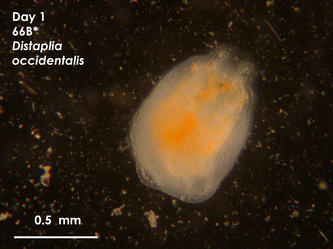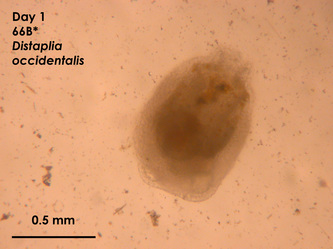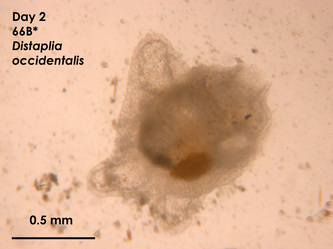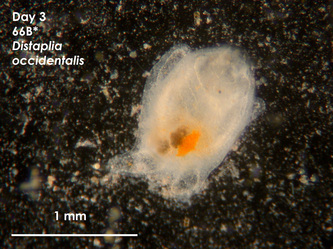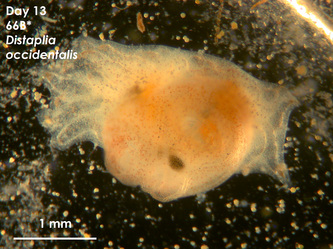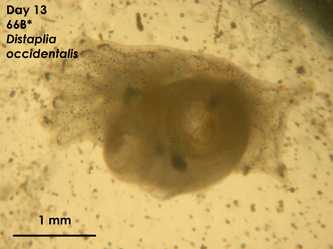Distaplia occidentalis
This colonial ascidian has relatively large larvae and therefore large juveniles, each with four ampullae that extend from the body like the legs of a tripod. The yellow-orange colored stomach and intestine is easily visible in younger organisms, though over time the digestive tract becomes the same color as the food particles eaten. The large, cylindrical pharyngeal basket and incurrent buccal siphon are easy to recognize on Distaplia occidentalis.
Anatomy of Distaplia occidentalis
Oozooid- the juvenile ascidian which arises from the larva; the original zooid before asexual reproduction begins
Ampullae- finger-like projections within the tunic surrounding the site where the juvenile attaches to the substrate
Atrial/Excurrent Siphon- a tube through which water and excrement exits the body
Buccal/Incurrent Siphon- a tube through which water and food particles enters the body
Pharyngeal/Branchial basket- a large, basket or cylindrical shaped reigion which houses the cilia used to pump water through the ascidian body
Ampullae- finger-like projections within the tunic surrounding the site where the juvenile attaches to the substrate
Atrial/Excurrent Siphon- a tube through which water and excrement exits the body
Buccal/Incurrent Siphon- a tube through which water and food particles enters the body
Pharyngeal/Branchial basket- a large, basket or cylindrical shaped reigion which houses the cilia used to pump water through the ascidian body
